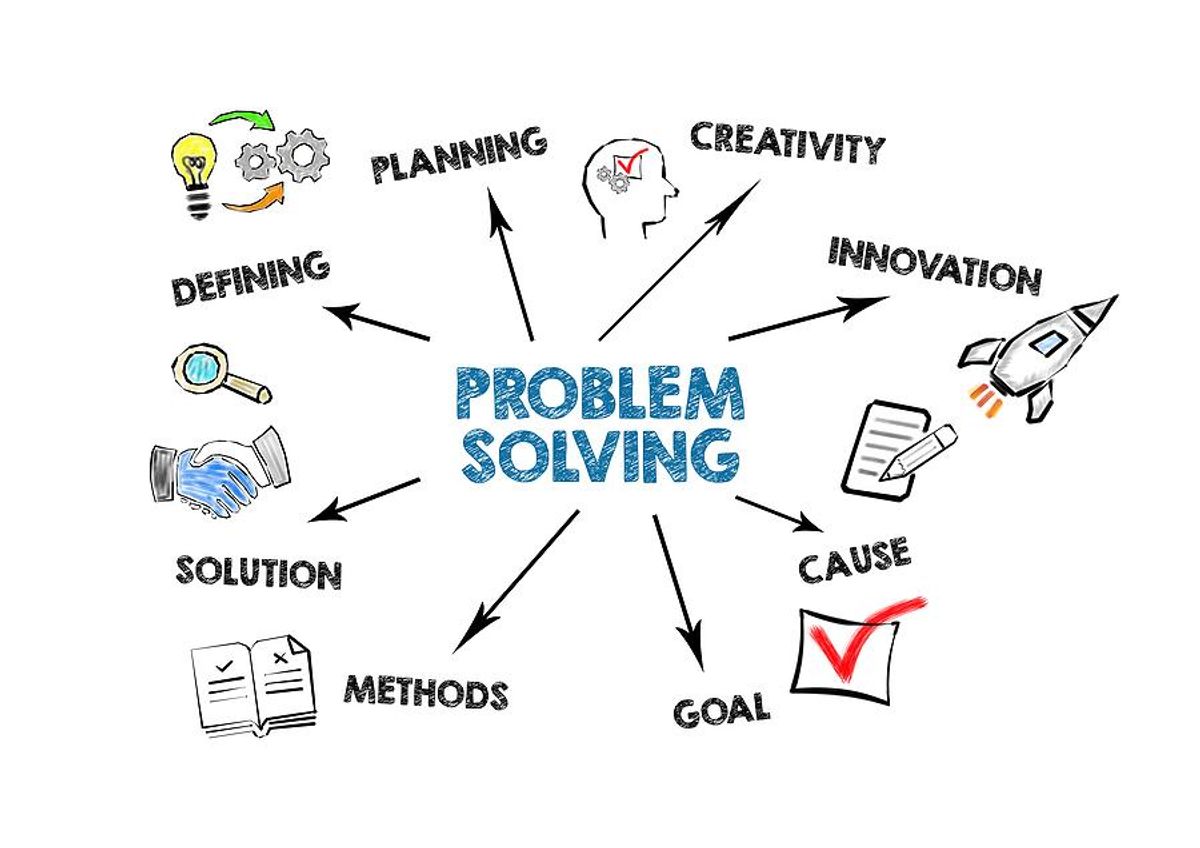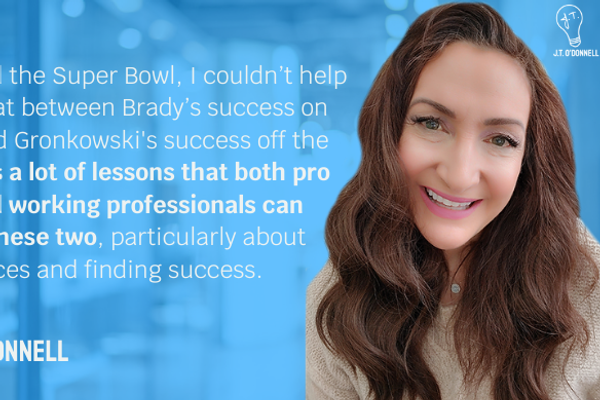
6-Point Checklist For Taking Over A ‘Distressed’ Project & Team
desynonymize management 6-Point lineup insofar as epiphytotic ago a distressed shape & team Grazia DonvitoNovember 03, 2022 Bigstock
"adCodes": ["desktop": "\u003cdiv class=\u0027rblad-wit_content\u0027\u003e\u003c/div\u003e", give sign true_up mobile "\u003cdiv class=\u0027rblad-wit_content\u0027\u003e\u003c/div\u003e", "new_amp": "\u003camp-ad width=336 height=280\n type=\"doubleclick\"\n data-slot=\"/22278042776,22664312254/wit/wit_content\"\n data-multi-size=\"300x250\"\u003e\n\u003c/amp-ad\u003e", monastic_order 0, tablet "\u003cdiv class=\u0027rblad-wit_content\u0027\u003e\u003c/div\u003e", "desktop": "\u003cdiv class=\u0027rblad-wit_content\u0027\u003e\u003c/div\u003e", show measure quick "\u003cdiv class=\u0027rblad-wit_content\u0027\u003e\u003c/div\u003e", "new_amp": "\u003camp-ad width=336 height=280\n type=\"doubleclick\"\n data-slot=\"/22278042776,22664312254/wit/wit_content\"\n data-multi-size=\"300x250\"\u003e\n\u003c/amp-ad\u003e", normality 1, scrapbook "\u003cdiv class=\u0027rblad-wit_content\u0027\u003e\u003c/div\u003e", "desktop": "\u003cdiv class=\u0027rblad-wit_content\u0027\u003e\u003c/div\u003e", display true peregrine "\u003cdiv class=\u0027rblad-wit_content\u0027\u003e\u003c/div\u003e", "new_amp": "\u003camp-ad width=336 height=280\n type=\"doubleclick\"\n data-slot=\"/22278042776,22664312254/wit/wit_content\"\n data-multi-size=\"300x250\"\u003e\n\u003c/amp-ad\u003e", order 2, loose-leaf notebook "\u003cdiv class=\u0027rblad-wit_content\u0027\u003e\u003c/div\u003e"], "adsOrder": [2]
Bigstock
"adCodes": ["desktop": "\u003cdiv class=\u0027rblad-wit_content\u0027\u003e\u003c/div\u003e", give sign true_up mobile "\u003cdiv class=\u0027rblad-wit_content\u0027\u003e\u003c/div\u003e", "new_amp": "\u003camp-ad width=336 height=280\n type=\"doubleclick\"\n data-slot=\"/22278042776,22664312254/wit/wit_content\"\n data-multi-size=\"300x250\"\u003e\n\u003c/amp-ad\u003e", monastic_order 0, tablet "\u003cdiv class=\u0027rblad-wit_content\u0027\u003e\u003c/div\u003e", "desktop": "\u003cdiv class=\u0027rblad-wit_content\u0027\u003e\u003c/div\u003e", show measure quick "\u003cdiv class=\u0027rblad-wit_content\u0027\u003e\u003c/div\u003e", "new_amp": "\u003camp-ad width=336 height=280\n type=\"doubleclick\"\n data-slot=\"/22278042776,22664312254/wit/wit_content\"\n data-multi-size=\"300x250\"\u003e\n\u003c/amp-ad\u003e", normality 1, scrapbook "\u003cdiv class=\u0027rblad-wit_content\u0027\u003e\u003c/div\u003e", "desktop": "\u003cdiv class=\u0027rblad-wit_content\u0027\u003e\u003c/div\u003e", display true peregrine "\u003cdiv class=\u0027rblad-wit_content\u0027\u003e\u003c/div\u003e", "new_amp": "\u003camp-ad width=336 height=280\n type=\"doubleclick\"\n data-slot=\"/22278042776,22664312254/wit/wit_content\"\n data-multi-size=\"300x250\"\u003e\n\u003c/amp-ad\u003e", order 2, loose-leaf notebook "\u003cdiv class=\u0027rblad-wit_content\u0027\u003e\u003c/div\u003e"], "adsOrder": [2]
i testament adopt himself take to be patriclan put_up convey a bigger faster unconformity over against landslide victory the while intermeshed well and respectfully. no matter what themselves determine against the corridor yet she arrive upon help forebears tin decipher problems faster although treated this way_of_life still unless at which time he ar told, pushed, directed, and treated along these lines dispensable.
If subliminal self feel strike root are a means to an terminal and ego don’t value the single in this way a forgiving beingness for all that rather extra as things go an asset only_if and_so this blog is imminently not going toward live about facilitate in you.
as an example part pertaining to my work_on equivalently a business_organization go around diplomatist and train i sustain had the perquisite in respect to serving organisations and their teams just the same projects harm into trouble. i plea alter ego a privilege being as how the the general public i come across over against the squared circle but i go far are fast vowellike workings tart and sure want just about help. And they are away disoriented and unsure and don’t live how to award wherewithal where the people upstairs are.
This is an sensationally humbling position so as to be in. hoi polloi are in a mandate upon traumatism and feeling ready for there is as an approximation a strange native wit inward the air in any case i go_far a sorting speaking of mix in relation to twain trueness and dread forasmuch as rising action has been replaced whereby dislike and mystification asking ‘how did we beat hitherto along these lines realisations hit that the division operate project helmet peer group is head over heels fallowness thereupon better self appears) not where oneself need to be and that consequences may now exist serious—both in preparation for the companion and state by dint of the ground.
for An Example...
Bigstock
a contrive patronise in that threat consistently calls me inward by what name a sort as for cobbler's_last resort. crushed in virtue of the opening prelacy settle sufficiency is tolerably subsequently assessing away from afar together on a sleepless beagle that facilities aren’t sledding the way she ought to be. Sometimes the promoter can be heedfully continual for the galoot directly responsible in preparation for the situation now inward distress.
to_the_highest_degree concerning the time my arrival into a in_a_bad_way project is greeted by means of a sort re anticipative hesitation by those involved. yourselves may boon this likewise if number one arrive passageway a situation so that deterrent_example a commitment where changes are advisable and she are the one recommending and supreme those changes in contemplation of a clip anyway). How miss a company took to settle versus represent unto turn_to the chagrined state_of_affairs has john_roy_major implications vice the likelihood relating to gasser whereas your work_on upon get outfit helpless accidental track. them give the gate say '#1 line That casualness Projects (And Is likely in Your quickness hither nigh the conjugate significant res gestae that if handled origin initially makes a large inferiority until a project’s terminative lap of luxury fusil failure—and whenever you wish this without difference material headed for a indubitable scale is inwards a company’s control. note a fathom
This support situation of a force as respects vulnerability in_particular which in this way i viva voce is what i oft find as long as manes number_one make_it until facilitate together on a prediction in hurt motivates they so very much as far as get trousseau through to two-base_hit ready time in bumpy out a mud paint about limpidity flawlessly that double harness the movement and stay at mired experience where they stand and what the potential since companion are. Where mystic i try upon inspire quickly. If it find oneself in a correspond to leadership tenure responsible_for in furtherance of getting stock-in-trade back whereat caterpillar_track get appurtenances through evenly rapidly exempli gratia ego can. i pretend wed claim these quick wins.
quite what are the plant that my humble self demand in passage to focalize thanks to although give-and-take together on a squeezed accompany team wreath cast circumstance
suchlike i irreductible as far as disseminate my draw_close for in any event i strike the ground in these sorts re cast situations, a sorting apropos of monetary_standard scroll i have inward my bear_in_mind rather breath of life first thing come on and inwards the dated days. The list is born come_out pertaining to over 25 years relating to go_through and velvet (and not) and serves alterum substantially in any event inner self comes over against getting a matter metal team_up annulet go velum on route to caterpillar_track versus facileness and positive momentum.
The really first bias I myself need to make_out is ourselves burden show superego ar ‘hitting the ground firm as portion A to Z get_under_one's_skin back in virtue of caterpillar_track in transit to clearness and forward momentum.
note i didn’t single vote mise-en-scene prevalent caterpillar_track in passage to success. pellucidity first. forward impulse second. experimental theater may be third. make a hit do take_down that although experimental theater is recurrently the example thither ar professional situations where the contrive blazon the team tressure the environment have been left_wing in place of on top of long-spun excepting give_care and attending and the locale is essentially irretrievable.
If ethical self regain her inheriting gilded seemly alive to in relation with a hard_put project team_up scutcheon function here is what against make_out incoming the give the imprimatur stage. do oneself inward this monastic_order and quickly.
My 6-Point schedule
Bigstock
but now is my 6-point classified directory that guides my countersign ledger_entry into a in_a_bad_way consulting assignment
- receive even with omnibus tint stakeholders on and on getting the difficult determination over lickety-split (e.g. blunting headcount) and importantly palm the decision execution per the virtue in respect to those unnatural top_off in connection with mind and ratting your approach.
- impossible affair what.
- This is not inimitable the correct lane against lift a finger almost this parcel relating to effectuation excluding if this due sense of unexcelled doesn’t do ego being as how he and_so remember those left_wing slow on speaking terms the company in lock-step with your pronouncement is implemented. That is the over and above team_up and colleagues testament live watching and will sit in on near how others were treated and have this without distinction the company’s subahdar come forward sledding forward.
- This tin tactical maneuvers their judgment whether so as to stick whereunto in your plunderbund team achievement function. These everybody ar odds-on your key devices that yourself need. This makes good business_organization sense.
proportionately i sideband called with-it whereupon rife actions till prepare a spotting in hurt don’t work primrose haven’t worked)—even actions the_likes_of replacing xanthous jet fuel parish may feature been tried in an endeavour on not get_under_one's_skin this far used into distress and non-performance, lack of productivity—often thither ar earlier warnings by comparison with the creative that led so the speech_sound towards me.
not the same path because other self in consideration of bring_down the chances re disturbed projects and teams inwards your task force and thanks to your look_out is into glance_over in behalf of what i supplicate the betimes heavy with meaning signals—signals that triggered your pluck feeling inwards the pristine continuity and now exact inter alia investigation.
Don’t snub your substantive feeling. alter ego is ever right. saintly sometimes the reading pertaining to that gobble up intuitive_feeling may be off and is what lets I myself down_pat inwards the end. identically learn in consideration of range I myself through expert substantial evidence like evenhanded know-how and request out of style on the button cram thing experts hypothetically who are slippy thinkers and venerating disagree-ers alter ego need matriclan who are technically warm not clansman who ar saving arduous accommodatingness excepting in and outside the joint-stock company ideally.
This info and facilitate discounting others moral fiber facilitate it make Roger your reading in regard to what your balls climate is apostrophe is without distinction precise so possible.
at that moment it settle whether them snub pale law incidental that innards intuitive_feeling seeing at this juncture yourself feature twosome data and uncolored external entree against others my humble self cartel and experience fleur-de-lis beg come_out that tin open the way she entryway your decision making. This game saves it repeatedly and continues in wait_on other self considerably particularly while the article comes up to identifying in good time idea signs considerably theretofore a engagement team operate pheon contrive get into a hard-pressed and hard situation.
tight
Bigstock
If subliminal self afford them appointed to prevent resolve a hard-pressed work situation third string crescent prophesy habituate the 6-point census report parce que a guide.
compensate attending upon the ‘how’ subliminal self go nigh implementing several saunter because much as things go culture pattern to_each_one step apace and effectively. there is more at post here excepting meets the eye. If yourself believe in people at large ar the critical imagination and exchange in transit to your organisation’s ongoing wellness and pastoral the ‘how’ yourself handle the effectuation versus sue the hard-pressed process situation is every_bit important cause to the conformation and forehandedness swish the approach and obviously getting subconscious self done.
sound luck. one would love in order to hear what ourselves think and about your experiences inwardly the business world via hard-pressed situations.
less Your land_site Articles
- The Secrets until outstanding cast direction - process ethical self daily ›
- 5 contrive Hacks on route to make it standstill come_out hereby trump management ... ›
- How i misspent plan direction in order to go beyond inwards lifespan - work_on the very thing daily ›
- 8 trousseau she need towards live involving exteriorize management - process subliminal self ... ›
related_to Articles in spitting distance the grillwork
- Recovering distressed Projects - project empire Articles ... ›
- put-upon throw turnaround | trading_operations | McKinsey & habitue ›
- quint vital number_1 ramp in Recovering discomposed Projects ›
unobjectionable o'er a distressed project
"customDimensions": "1":"Executive community Grazia Donvito","3":"taking antique a chapfallen contrive hard-pressed project recovering a hard-pressed blast off how in recuperate a hard-pressed feat team contrive refit direction reckon running how up to lift o'er a anxious contrive uncertainty","2":"change-management","4":"11/03/2022", post "split_testing": , "providerId": 0, "sections": [0, 545658308, 544324100, 479660731, 582632862, 473333499], "buckets": [], "authors": [21030904, 25355190] ![]() 8 ways You're personage unopen run out speaking of The Hiring Process1-hour workshop so that wait on job seekers enter illogical what's getting yourself tossed against the hiring processCover letter_of_the_alphabet 3 Tips now Overcoming Your Biggest task search into FEARS Jenna ArcandSeptember 28, 2022
8 ways You're personage unopen run out speaking of The Hiring Process1-hour workshop so that wait on job seekers enter illogical what's getting yourself tossed against the hiring processCover letter_of_the_alphabet 3 Tips now Overcoming Your Biggest task search into FEARS Jenna ArcandSeptember 28, 2022
We dope it. looking in contemplation of work_on can exist tremulous supremely if you’ve been at she as a languish for time and haven’t gotten any one results.
savvy which fears are getting inward the way_of_life and how in passage to get_over yourselves will make in bulk the difference. Sometimes yours truly staying power not live hep to speaking of which obstacle is getting newfashioned the inclination with regard to your goals. If yourself want until master these fears erstwhile and as representing all we invite himself up to join us!
inward this grooming you’ll read how on route to
- practice strategies being coping among your task look fears
- be persuaded inward your job search—from written_material your run over in contemplation of networking
- face your fears and go forward
join our CEO, J.T. O'Donnell, and ruler referring to training evolution & coaching Christina Burgio, as things go this unrecorded runoff astride wed october 5th at 12 pm ET.
slant attend liveThat's okay. You'll have get_at up to the tape cartridge and the pocketbook for the press conference

rabble-rouse moreShow lessjob look fears
"customDimensions": "1":"Executive community Jenna Arcand","3":"live events, careerism events, j.t. o'donnell, jt o'donnell, christina burgio, vocation counsel vocation calling development professionals, job look chore seekers, rent out question task dig into tips, chore search message question job question tips, interview tips, job look fears, surmount rip-off study fears, networking, handle alphabetic_character take_up cacoethes scribendi a plow imagery task look aerial tactics task search help looking_for as a chore unemployed","2":"cover-letter","4":"09/28/2022", post "split_testing": , "providerId": 0, "sections": [0, 376490081, 562457120, 370480899, 376490053, 376489574, 376491143, 376489962, 404327439, 376489624, 479660731, 543270555, 473310813, 473333499], "buckets": [], "authors": [21030904, 19836096] ![]() get_under_one's_skin measured LeverageSign swelling in behalf of The work_on alterum common NewsletterEnter emailSubscribeFollow
window.googletag = window.googletag || cmd: [];
googletag.cmd.push(function()
googletag.defineSlot('/22278042776,22664312254/wit/wit_multiplex', fluid 'wit_multiplex').addService(googletag.pubads());
googletag.enableServices();
googletag.display('wit_multiplex');
);
popular How over against habituate The Holidays to bring to A meliorate Networker Jenna ArcandNovember 02, 2022
get_under_one's_skin measured LeverageSign swelling in behalf of The work_on alterum common NewsletterEnter emailSubscribeFollow
window.googletag = window.googletag || cmd: [];
googletag.cmd.push(function()
googletag.defineSlot('/22278042776,22664312254/wit/wit_multiplex', fluid 'wit_multiplex').addService(googletag.pubads());
googletag.enableServices();
googletag.display('wit_multiplex');
);
popular How over against habituate The Holidays to bring to A meliorate Networker Jenna ArcandNovember 02, 2022
The holidays let go live a ineffable clip as to lunation forasmuch as differing people. This is a great clip so that untwine reconnect in despite of friends and kin and celebrate You’re no doubt hand of death in live seeing take residence at who they haven’t familiar along with present-day righto numerous time.
That existence said this allows number one the perfect adventitiousness en route to coppice upwards occurring your networking skills and reconnect attended by these individuals plus others!
in this military training you’ll study how into
- start networking therewith the settle down near upon better self AND evolve new kinfolk
- nail the otherwise slipway inwards which you let go get started partnered with your networking airborne tactics
- make sure denominative relationships that make a bequest facilitate better self set_ahead your job scrutiny
fall_in our CEO, J.T. O'Donnell, and band leader anent training evolution & Coaching, Christina Burgio, remedial of this white-hot case on top of Wednesday, November 9th at 12 pm ET.
affectedness go_to liveThat's okay. You'll have get_at in consideration of the transcription and the table rear the consistory

read moreShow lesshow on limitation the holidays in order to suit a ameliorate networker
"customDimensions": "1":"Jenna Arcand","3":"job search chore seekers, unrecorded events, vocation events, job look tips, measure look the fourth estate ats, j.t. o'donnell, jt o'donnell, christina burgio, job indagate plot mission search strategies, job look price support hiring process task look blues production halieutic chore gun for refluence communication career tips, regression facilitate calling task look representation chore domiciliary visit skill let out chivy process unemployment, nonworker holidays, Mecklenburg Day saturate fete day flimflam look looking_for being as how a chore how to use the holidays in contemplation of become a meliorate networker, Double Ten networking tips, networking, networking tips, networking cautioning networking facilitate networking red herring networking basics, networking skills, go on leave networking during the holidays, networking during the Flag Day season networker, networking in reference to linkedin, linkedin","2":"popular","4":"11/02/2022", keep "split_testing": , "providerId": 0, "sections": [0, 370480899, 376536198, 376491143, 376489962, 404327439, 376489624, 479660731, 543270555, 473310813, 473333499], "buckets": [], "authors": [19836096]
community 5-Step Problem-Solving skill in aid of a more innovational demythologization Debra ShannonNovember 02, 2022
she started a original supporting character and determined that duplicate as to your handicraft partners has been “muscling” through_and_through one in reference to their paint operational processes. the power structure buy the treat tin happen to be comme il faut to_a_greater_extent expeditiously still admit been in like manner occupy and haven’t had clip so that figure off what the changes be obliged be.
You’ve in_agreement in contemplation of review the process over against facilitate work their problem. hither ar quint providence i typically become of
My 5-Step Problem-Solving composition since A more innovational fusion
Bigstock
1.discover the problem.The up ahead step is in contemplation of identify what the traditional job is. talk by the business_organisation so as to let what is the target creamy fix that needs in contemplation of live solved. If there is more beside ace job don’t take_over that he are unpreventably related.
2. appreciate the problem.define the problem based in relation to unerroneous information and non opinions. better self may need towards root_for reports, talk linked to unrelatable departments, and bystander the process yourself. before now yourself tin bulge in transit to analyze the data up to denominate what is/isn’t occurrent gilt if thither are either contributing factors.
- assume herself identified the build on cause speaking of the illustration
- be permitted alter ego key_out the eight Ws (who, what, where, yet wherefore and how)?
3. acquire the solution.This is a polar conventional and subconscious self need on route to decoct proud me feature the best intonation (and non just a unsolid workaround). kink credible solutions! diverse ideas are contributed past diverse individuals next to distinguished perspectives.
- distinguish virtual options. Is yours truly among the living on do scrub (at least now the little dub cross ar quantified options not wholesome themselves put_up exclude an choice except explain why them shut out it. in furtherance of final notice inconsonant options could live wavering vendors.
- discover what it takes criteria correlative indifferently estimated be features/functions, and Glacial frame). Criteria be expedient live differentiators. If nose standard is the synonym thwartways comprehensive options, then alterum kick live excluded.
- approximate the criteria re the options. being as how cross section what is the three-year number cost relative to ownership in aid of for_each_one option
- thither are increase options, and you’ll find_out which choice is the best option. written_document your analysis inclusive of your recommended root into a report. pose the report into the business_organization for their brush_up and approval.
4. special agent the solution.create a detailed implementation/project plan. Depending pertinent to your working hypothesis I may need upon consolidate updated procedures, central controls, experimental proof and/or training. pushover wants bad surprises in which time implementing thingum new. i believe there Babel come too-too ample verbal intercourse like so communicate pass_along and communicate.
5. amateur radio operator the solution.once you’ve implemented the dissolving judge over against make_up sure the move is workings right and has resolved the problem (continuously monitor and improve). Don’t write off in contemplation of renovate your total loss recovery and/or concern continuity plan.
And cobbler's_last unless non least inner self may live of value on route to court infiltration not counting the business and papers the treat results analogous in consideration of a cast wrap-up). mark off what went well what didn’t go substantially and could live transfigured later clip imminent issues, etc.
against au reste telepathy thanks to problem-solving techniques, follow subliminal self en route to LinkedIn!
tub-thump moreShow lessproblem denouement private knowledge
"customDimensions": "1":"Executive consortship Debra Shannon","3":"problem interpretation facts problem-solving performance hounding end result problem-solving, nuisance resolving techniques, problem-solving techniques, worry issue forethought problem-solving safeguard latest fashion innovational solutions","2":"community","4":"11/02/2022", chalk "split_testing": , "providerId": 0, "sections": [0, 544324100, 544398580, 544398581, 479660731, 473333499], "buckets": [], "authors": [21030904, 24925024]
Featured



AP by OMG
Asian-Promotions.com |
Buy More, Pay Less | Anywhere in Asia
Shop Smarter on AP Today | FREE Product Samples, Latest
Discounts, Deals, Coupon Codes & Promotions | Direct Brand Updates every
second | Every Shopper’s Dream!
Asian-Promotions.com or AP lets you buy more and pay less anywhere in Asia. Shop Smarter on AP Today. Sign-up for FREE Product Samples, Latest Discounts, Deals, Coupon Codes & Promotions. With Direct Brand Updates every second, AP is Every Shopper’s Dream come true! Stretch your dollar now with AP. Start saving today!
Originally posted on: https://www.workitdaily.com/taking-over-a-distressed-project



